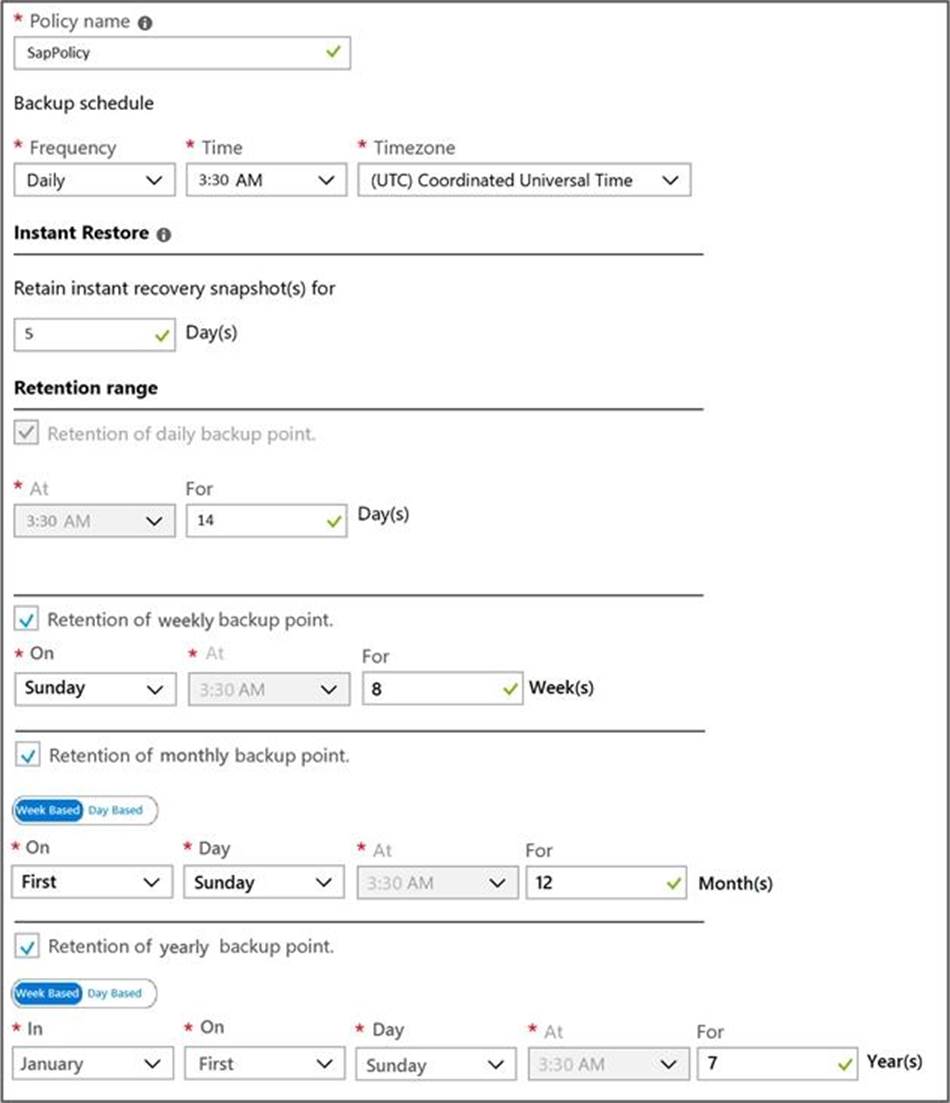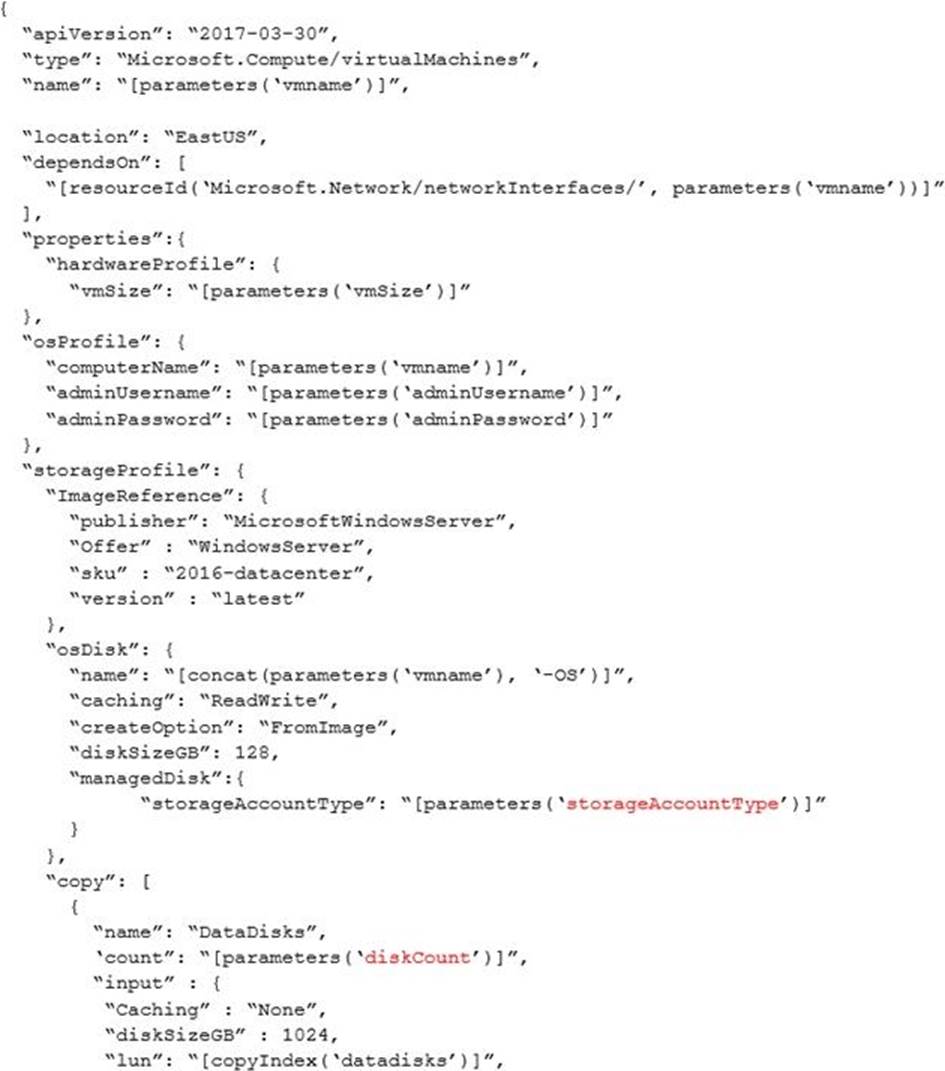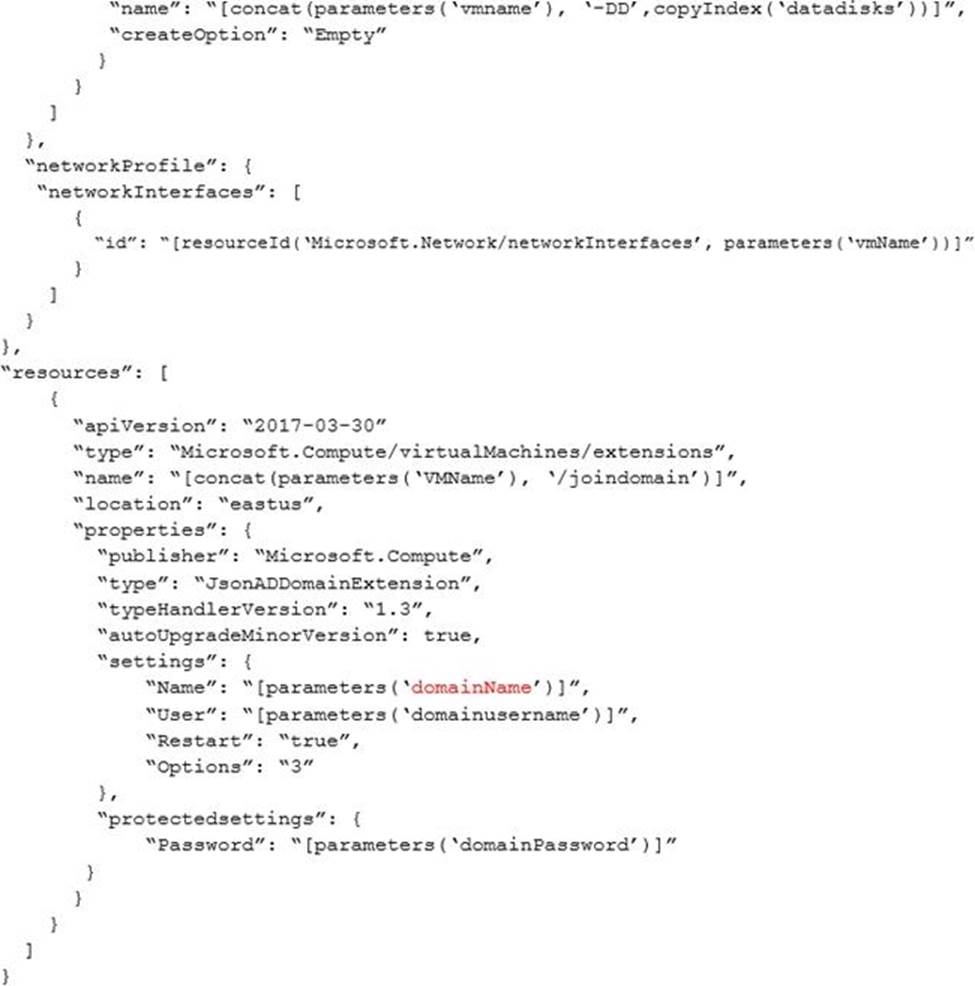Microsoft AZ-120 Planning and Administering Microsoft Azure for SAP Workloads Online Training
Microsoft AZ-120 Online Training
The questions for AZ-120 were last updated at Apr 23,2025.
- Exam Code: AZ-120
- Exam Name: Planning and Administering Microsoft Azure for SAP Workloads
- Certification Provider: Microsoft
- Latest update: Apr 23,2025
Topic 1, Litware, inc
Case Study
This is a case study. Case studies are not timed separately. You can use as much exam time as you would like to complete each case. However, there may be additional case studies and sections on this exam. You must manage your time to ensure that you are able to complete all questions included on this exam in the time provided.
To answer the questions included in a case study, you will need to reference information that is provided in the case study. Case studies might contain exhibits and other resources that provide more information about the scenario that is described in the case study. Each question is independent of the other questions in this case study.
At the end of this case study, a review screen will appear. This screen allows you to review your answers and to make changes before you move to the next section of the exam. After you begin a new section, you cannot return to this section.
To start the case study
To display the first question in this case study, click the Next button. Use the buttons in the left pane to explore the content of the case study before you answer the questions. Clicking these buttons displays information such as business requirements, existing environment, and problem statements. If the case study has an All Information tab, note that the information displayed is identical to the information displayed on the subsequent tabs. When you are ready to answer a question, click the Question button to return to the question.
Overview
Litware, Inc. is an international manufacturing company that has 3,000 employees.
Litware has two main offices. The offices are located in Miami, FL, and Madrid, Spain.
Existing Environment
Infrastructure
Litware currently uses a third-party provider to host a datacenter in Miami and a disaster recovery datacenter in Chicago, IL.
The network contains an Active Directory domain named litware.com. Litware has two third-party applications hosted in Azure.
Litware already implemented a site-to-site VPN connection between the on-premises network and Azure.
SAP Environment
Litware currently runs the following SAP products:
– Enhancement Pack6 for SAP ERP Central Component 6.0 (SAP ECC 6.0)
– SAP Extended Warehouse Management (SAP EWM)
– SAP Supply Chain Management (SAP SCM)
– SAP NetWeaver Process Integration (PI)
– SAP Business Warehouse (SAP BW)
– SAP Solution Manager
All servers run on the Windows Server platform. All databases use Microsoft SQL Server. Currently, you have 20 production servers.
You have 30 non-production servers including five testing servers, five development servers, five quality assurance (QA) servers, and 15 pre-production servers.
Currently, all SAP applications are in the litware.com domain.
Problem Statements
The current version of SAP ECC has a transaction that, when run in batches overnight, takes eight hours to complete. You confirm that upgrading to SAP Business Suite on HANA will improve performance because of code changes and the SAP HANA database platform.
Litware is dissatisfied with the performance of its current hosted infrastructure vendor. Litware experienced several hardware failures and the vendor struggled to adequately support its 24/7 business operations.
Requirements
Business Goals
Litware identifies the following business goals:
– Increase the performance of SAP ECC applications by moving to SAP HANA. All other SAP databases will remain on SQL Server.
– Move away from the current infrastructure vendor to increase the stability and availability of the SAP services.
– Use the new Environment, Health and Safety (EH&S) in Recipe Management function.
– Ensure that any migration activities can be completed within a 48-hour period during a weekend.
Planned Changes
Litware identifies the following planned changes:
– Migrate SAP to Azure.
– Upgrade and migrate SAP ECC to SAP Business Suite on HANA Enhancement Pack 8.
Technical Requirements
Litware identifies the following technical requirements:
– Implement automated backups.
– Support load testing during the migration.
– Identify opportunities to reduce costs during the migration.
– Continue to use the litware.com domain for all SAP landscapes.
– Ensure that all SAP applications and databases are highly available.
– Establish an automated monitoring solution to avoid unplanned outages.
– Remove all SAP components from the on-premises network once the migration is complete.
– Minimize the purchase of additional SAP licenses. SAP HANA licenses were already purchased.
– Ensure that SAP can provide technical support for all the SAP landscapes deployed to Azure.
You need to recommend a solution to reduce the cost of the SAP non-production landscapes after the migration.
What should you include in the recommendation?
- A . Deallocate virtual machines when not In use.
- B . Migrate the SQL Server databases to Azure SQL Data Warehouse.
- C . Configure scaling of Azure App Service.
- D . Deploy non-production landscapes to Azure Devlest Labs.
HOTSPOT
For each of the following statements, select Yes if the statement is true. Otherwise, select No. NOTE: Each correct selection is worth one point.

HOTSPOT
For each of the following statements, select Yes if the statement is true. Otherwise, select No. NOTE: Each correct selection is worth one point.

You are evaluating which migration method Litware can implement based on the current environment and the business goals.
Which migration method will cause the least amount of downtime?
- A . Use the Database migration Option (DMO) to migrate to SAP HANA and Azure During the same maintenance window.
- B . Use Near-Zero Downtime (NZDT) to migrate to SAP HANA and Azure during the same maintenance window.
- C . Migrate SAP to Azure, and then migrate SAP ECC to SAP Business Suite on HANA.
- D . Migrate SAP ECC to SAP Business Suite on HANA an the migrate SAP to Azure.
Litware is evaluating whether to add high availability after the migration?
What should you recommend to meet the technical requirements?
- A . SAP HANA system replication and Azure Availability Sets
- B . Azure virtual machine auto-restart with SAP HANA service auto-restart.
- C . Azure Site Recovery
You are evaluating the migration plan.
Licensing for which SAP product can be affected by changing the size of the virtual machines?
- A . SAP Solution Manager
- B . PI
- C . SAP SCM
- D . SAP ECC
You need to ensure that you can receive technical support to meet the technical requirements.
What should you deploy to Azure?
- A . SAP Landscape Management (LaMa)
- B . SAP Gateway
- C . SAP Web Dispatcher
- D . SAP Router
What should you use to perform load testing as part of the migration plan?
- A . JMeter
- B . SAP LoadRunner by Micro Focus
- C . Azure Application Insights
- D . Azure Monitor
Topic 2, Contoso Ltd Case Study
Case Study
This is a case study. Case studies are not timed separately. You can use as much exam time as you would like to complete each case. However, there may be additional case studies and sections on this exam. You must manage your time to ensure that you are able to complete all questions included on this exam in the time provided.
To answer the questions included in a case study, you will need to reference information that is provided in the case study. Case studies might contain exhibits and other resources that provide more information about the scenario that is described in the case study. Each question is independent of the other questions in this case study.
At the end of this case study, a review screen will appear. This screen allows you to review your answers and to make changes before you move to the next section of the exam. After you begin a new section, you cannot return to this section.
To start the case study
To display the first question in this case study, click the Next button. Use the buttons in the left pane to explore the content of the case study before you answer the questions. Clicking these buttons displays information such as business requirements, existing environment, and problem statements. If the case study has an All Information tab, note that the information displayed is identical to the information displayed on the subsequent tabs. When you are ready to answer a question, click the Question button to return to the question.
Overview
Contoso, Ltd. is a manufacturing company that has 15,000 employees.
The company uses SAP for sales and manufacturing.
Contoso has sales offices in New York and London and manufacturing facilities in Boston and Seattle.
Existing Environment
Active Directory
The network contains an on-premises Active Directory domain named ad.contoso.com. User email addresses use a domain name of contoso.com.
SAP Environment
The current SAP environment contains the following components:
– SAP Solution Manager
– SAP ERP Central Component (SAP ECC)
– SAP Supply Chain Management (SAP SCM)
– SAP application servers that run Windows Server 2008 R2
– SAP HANA database servers that run SUSE Linux Enterprise Server 12 (SLES 12)
Problem Statements
Contoso identifies the following issues in its current environment:
– The SAP HANA environment lacks adequate resources.
– The Windows servers are nearing the end of support.
– The datacenters are at maximum capacity.
Requirements
Planned Changes
Contoso identifies the following planned changes:
– Deploy Azure Virtual WAN.
– Migrate the application servers to Windows Server 2016.
– Deploy ExpressRoute connections to all of the offices and manufacturing facilities.
– Deploy SAP landscapes to Azure for development, quality assurance, and production.
All resources for the production landscape will be in a resource group named SAPProduction.
Business goals
Contoso identifies the following business goals:
– Minimize costs whenever possible.
– Migrate SAP to Azure without causing downtime.
– Ensure that all SAP deployments to Azure are supported by SAP.
– Ensure that all the production databases can withstand the failure of an Azure region.
– Ensure that all the production application servers can restore daily backups from the last 21 days.
Technical Requirements
Contoso identifies the following technical requirements:
– Inspect all web queries.
– Deploy an SAP HANA cluster to two datacenters.
– Minimize the bandwidth used for database synchronization.
– Use Active Directory accounts to administer Azure resources.
– Ensure that each production application server has four 1-TB data disks.
– Ensure that an application server can be restored from a backup created during the last five days within 15 minutes.
– Implement an approval process to ensure that an SAP administrator is notified before another administrator attempts to make changes to the Azure virtual machines that host SAP.
It is estimated that during the migration, the bandwidth required between Azure and the New York office will be 1 Gbps. After the migration, a traffic burst of up to 3 Gbps will occur.
Proposed Backup Policy
An Azure administrator proposes the backup policy shown in the following exhibit.

Azure Resource Manager Template
An Azure administrator provides you with the Azure Resource Manager template that will be used to provision the production application servers.


You are planning the Azure network infrastructure to support the disaster recovery requirements.
What is the minimum number of virtual networks required for the SAP deployed?
- A . 1
- B . 2
- C . 3
- D . 4
HOTSPOT
Before putting the SAP environment on Azure into production, which command should you run to ensure that the virtual machine disks meet the business requirements? To answer, select the appropriate options in the answer area. NOTE: Each correct selection is worth one point.

Latest AZ-120 Dumps Valid Version with 125 Q&As
Latest And Valid Q&A | Instant Download | Once Fail, Full Refund




